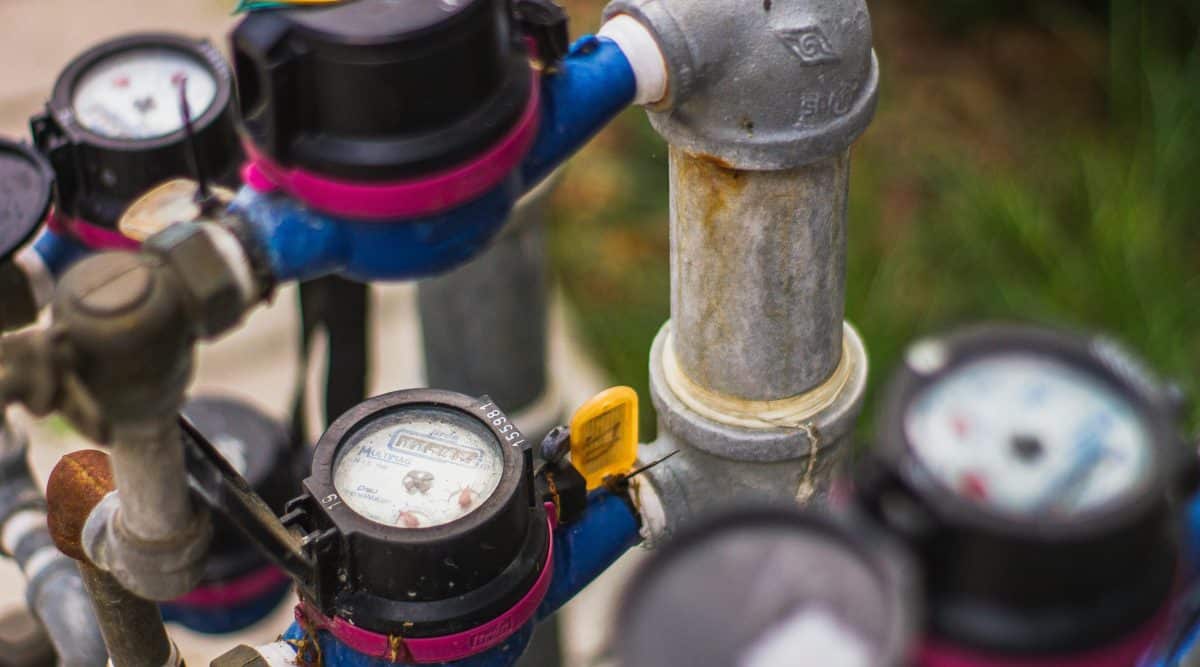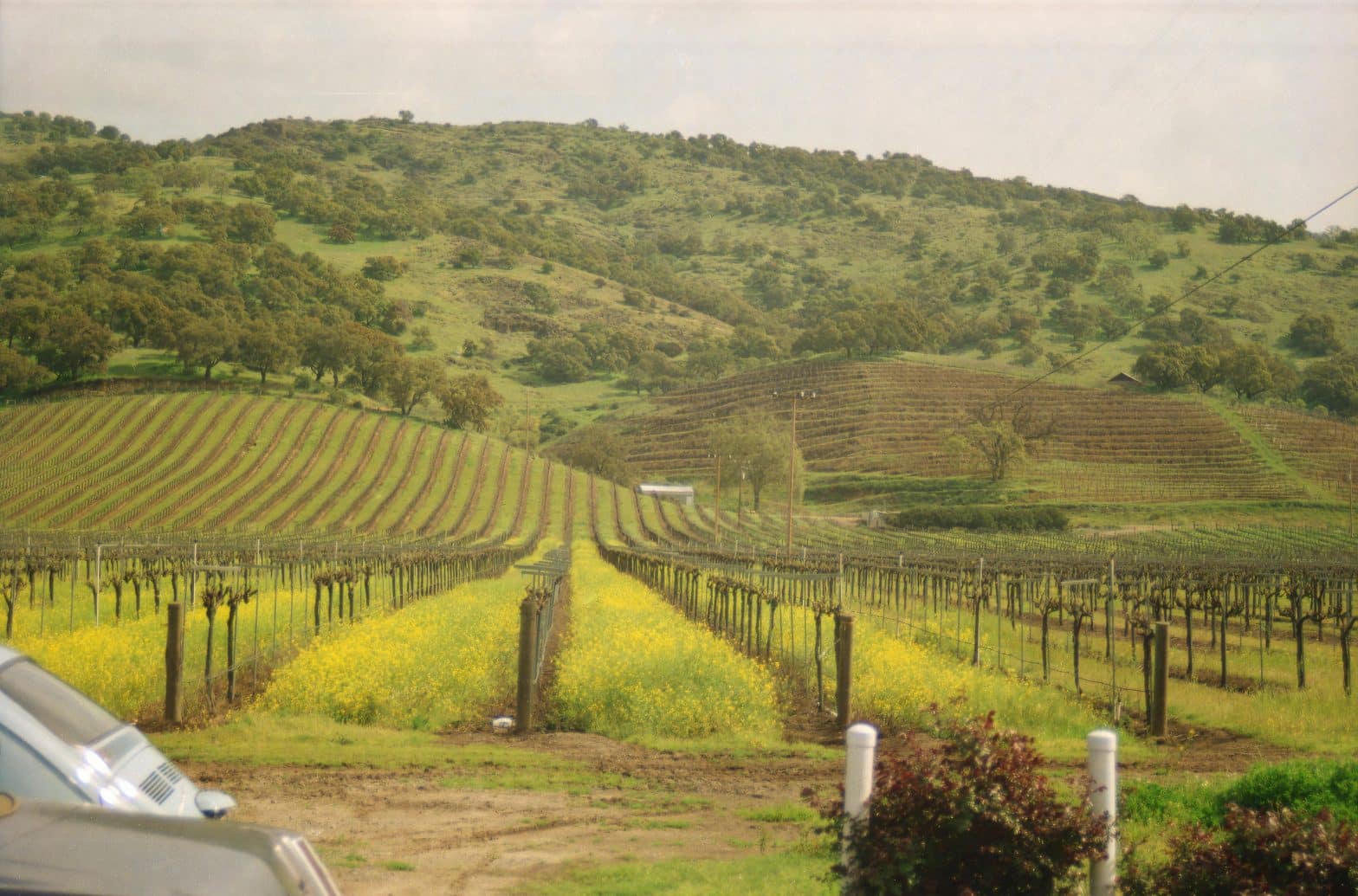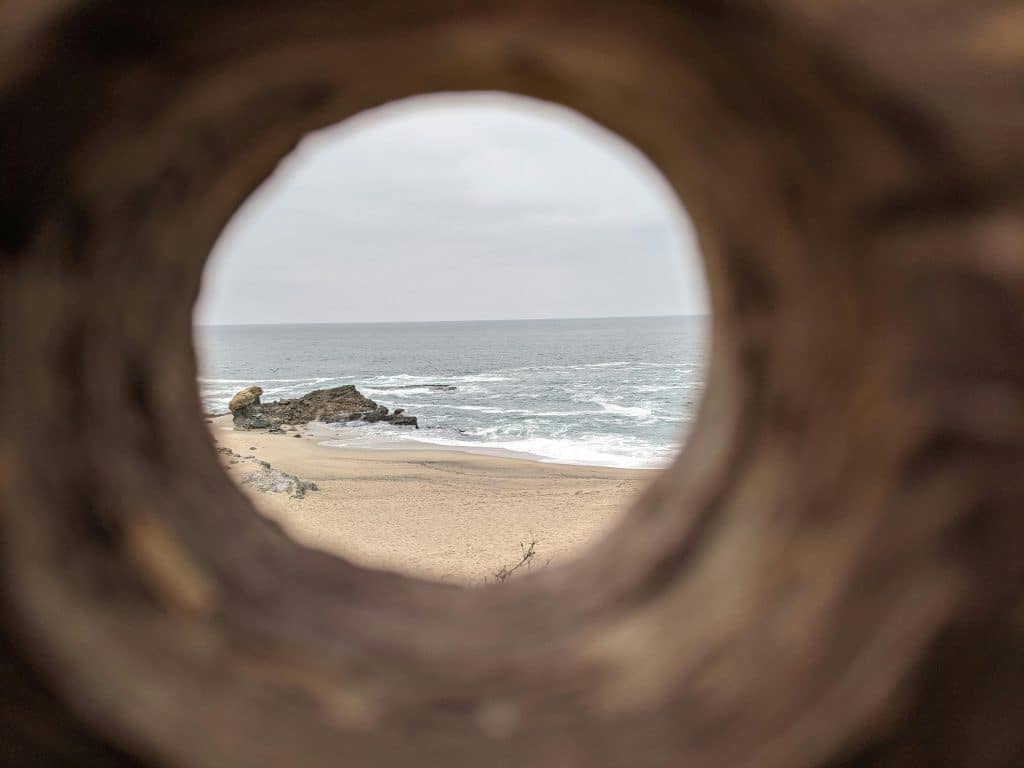To spot a hidden water leak in your Sonoma County home, check for signs like damp spots, musty smells, or a sudden jump in your water bill. Drips or puddles on floors, peeling paint, and warped wood can indicate that water is leaking behind walls or under floors. Mold or mildew growth in dry areas is a further telltale indicator. Listen for the subtle noises of operating water once no taps are on. Sonoma County homes could be at risk from older pipes or shifting soil. Catching leaks early puts a halt to major repair bills and health hazards. The following paragraphs will provide simple ways and equipment to assist in identifying these leaks prior to them becoming larger problems.
Key Takeaways
- If there were a way to identify these leaks early, before the flooding and mold.
- If you suspect a hidden water leak inside your home, listen for unexplained sounds, notice persistent odors, and look for visible damage such as stains or mold.
- Pay particular attention to susceptible locations such as kitchens, bathrooms, foundations, and irrigation systems because these are typical culprits.
- Know that local elements like soil type, seismic activity, and even weather in Sonoma County can all impact leak risks, particularly in older homes.
- Play it fast if you suspect a persistent leak or safety hazard. Take pictures of the damage and call in the pros for a diagnosis and repairs.
- Fixing leaks right away stops damage to your home’s structure, protects your family’s health against mold, and keeps you from paying expensive repair and water bills down the road.

Uncovering a Hidden Water Leak
You don’t realize a hidden water leak detection issue until you have damage or your water bill is significantly increased. These leaks, including common leaks like slab leak problems, can occur under floors, behind walls, or even outside the house and are prevalent in homes built on sandy soil or areas of high wind. Roughly 10% of residences contend with leaks that waste a minimum of 340 litres of water every day. Finding these leaks quickly can save water, money, and much bigger headaches with mold or structural damage.
1. The Water Bill
Pay close attention to your water bill every month. If you notice an unexpected spike in usage, it may indicate a water leak detection issue, especially if your behavior hasn’t changed. Comparing your bill to previous months and seasonal averages can reveal discrepancies. Monitoring usage will help you catch those common leaks early, as even tiny drips can lead to significant water loss and expenses.
2. The Water Meter
Test your water meter when no water is being used to enhance your water leak detection efforts. Record the reading, wait 15 to 30 minutes, and check again; any movement may reveal a hidden leak. This simple action can regularly detect silent drips that may be wasting hundreds of gallons a month. Ensure your meter is functioning properly, as a malfunctioning meter may provide inaccurate readings. Conducting this regularly, especially after plumbing repairs, helps you stay aware of any new leak problems.
3. Unexplained Sounds
Listen for strange sounds in quiet areas, such as a consistent drip from a faucet or a low running noise in a wall. Gurgling drains and unusual noises from the water heater can signal trouble as well. While these sounds may be subtle, they often indicate invisible leaks, such as slab leaks, hidden behind walls or beneath floors, where water can silently cause significant damage.
4. Persistent Odors
Musty odors in a room or around a bathroom can indicate water behind surfaces, often linked to household leaks. At other times, a sewage smell signifies a sewer leak, which requires professional leak detection. Damp patches sometimes have a characteristic odor, and smells near sinks or toilets can indicate minor plumbing issues or blockages. Check out these smells immediately to avoid mold and further damage.
5. Visible Damage
Water stains on walls or ceilings, peeling paint, or warped flooring can all indicate concealed leaks, such as a slab leak. Even little patches of mold are red flags for water leak detection. Residents should examine pipes near any affected wall or floor areas and seek evidence of water pooling there, as mold signifies that water has been lurking around for a while.
Vulnerable Areas in Your Home
Water leaks can occur in almost any part of a house, particularly in areas with high plumbing density or aging pipes. While some leaks are obvious, others may be hidden behind walls, under floors, or around your home’s foundation. Early detection is critical, especially for common leaks like slab leaks, as they can increase water bills, promote mold, and initiate costly repairs. These areas should be monitored closely, particularly in homes with in-slab copper tubing or aging plumbing systems.
Foundation
Vulnerable Areas Around Your House Foundation cracks are an early warning sign for potential leaks. They can lead to significant water loss through small cracks, particularly if there is rain or if the soil around the home is poorly graded. Pooled water or moisture at the foot of the home indicates that effective water leak detection is necessary, as it shows water is not draining away properly, increasing the risk of concealed leaks and rot. Soil erosion outside, especially near corners, acts as a telltale sign that drainage is a problem and water is not being diverted effectively. This is crucial for homes with underfloor radiant heat, where in-slab copper tubing can leak without any outward indication. Regular inspections of these areas and ensuring the ground slopes away from the home can work wonders in keeping water out and preventing damage.
Walls and Ceilings
Discolored or bulging walls are a telltale indicator of water behind the surface, often linked to water leak detection problems. It might mean a pipe is leaking within the wall, sometimes for months before displaying. Bathrooms or kitchen ceilings are vulnerable to damp patches, frequently an indication of common leaks overhead. Mold or mildew on walls, even a small patch, shouldn’t be overlooked, as it tends to grow when moisture is trapped inside. Insulation behind the wall may get wet, which is more difficult to detect but can be located if the area feels cooler or smells musty.
Fixtures
Leaks at fixtures often begin small, but they can lead to significant water loss if not addressed promptly. Dripping faucets or showerheads waste water and may indicate larger issues with pipes or seals, highlighting the importance of professional leak detection. Toilets are another common culprit; adding a drop of food coloring to the tank reveals water leaking into the bowl without flushing. Regular inspections beneath sinks for water stains, corrosion, or puddles around pipe joints can help identify potential problems before they escalate.
Landscape
If you notice really green spots on your lawn during dry seasons, it could indicate a leak detection issue related to a leaking underground pipe. It’s essential to have your irrigation systems inspected for leaks, as defective joints or ruptured hoses can lead to significant water loss. Vulnerable areas in your home, such as drains, must remain clear to disperse water away from your foundation. Wet or soft soil adjacent to the home’s foundation, even without recent rain, might suggest a concealed leak underground that requires professional leak detection services.

The Sonoma County Factor
Sonoma County Plumbing faces distinctive environmental and structural challenges, including local soil conditions and seismic activity that contribute to how leaks, such as slab leaks, develop and remain undetected. Homeowners are encouraged to learn about these factors, as effective leak detection can prevent unnoticed leaks that squander hundreds of gallons of water each month and inflate water bills.
Soil and Seismic
Clay-rich Sonoma County soils, for example, tend to expand when wet and contract when dry. This freeze/thaw cycle exerts stress on subterranean pipes, causing them to crack and leak. As the ground moves, even from small earthquakes, it can shift pipes beneath our homes, putting strain on joints and causing slow drips or pinhole leaks. In vintage neighborhoods, soil erosion around service lines can lead to water leak detection issues, causing them to leak silently under foundations or lawns. Winter’s torrential rains soak the earth and could push water into fissures or fragile pipe joints, masking leaks. Regular inspections and professional leak detection tools, including acoustic, infrared, and more, enable you to catch issues before they worsen.
Older Homes
Old plumbing, such as rusted-out copper or galvanized steel pipes, is prevalent in Sonoma County’s older homes. These pipes can lead to significant water loss as they drip for months behind walls or under floors before any damage manifests. Many homes have had decades of repairs; patchwork fixes can collapse under constant stress. Renovating to new piping materials can stave off leaks, particularly if water bills start to spike unexpectedly, indicating potential leak detection issues.
Weather Patterns
Sonoma County seasons are rough on plumbing, with winter rains leading to more water leak detection challenges and flooding from oversaturated soil. Droughts shrink the earth, occasionally separating pipes or stressing them into slow leaks. Shifting temperatures complicate the aging plumbing systems. Regularly checking water meters for abnormal activity and monitoring water bills for surges are sensible practices. Most leaks are initially detected this way, and professional leak detection services can generally identify problems within one or two hours, regardless of the home’s size.
When to Call a Professional
Identifying a concealed water leak in the beginning stages can be a time, money, and stress saver. Certain leaks, such as slab leaks, require professional leak detection assistance immediately, particularly when the problem is difficult to locate or repair. Moving quickly minimizes damage, protects your home, and helps prevent more costly repairs later.
Persistent Signs
- Pay attention to any loss of water pressure at faucets, showers, or appliances.
- Look for a few months of spikes in your water bill.
- Look for musty smells or stains on ceilings and walls.
- Record information about water damage, noting where and when you observe it.
- Steer clear of do-it-yourself repairs if pipes are aging, difficult to access, or if you detect mold.
- Schedule ‘professional’ plumbing inspections if you notice leaks more than once a year.
Taking note of these indicators allows you to provide precise information to plumbers. It assists them in locating and resolving the issue more quickly. If you encounter these problems repeatedly, periodic inspections help in identifying leaks early.
Attempting to repair stubborn leaks alone will only aggravate the situation. DIY home repairs can cause larger pipe breaks or distribute water damage. Sometimes it’s just best to leave it to the pros.
Safety Concerns
Any gas leak requires a call to a professional immediately. Gas and water leaks can sometimes go together, particularly around appliances. A fast response reduces fire hazard and maintains safety.
Mold can begin growing on wet areas within 24 to 48 hours. This may lead to health issues, particularly if someone in your house suffers from allergies or asthma. Mold from hidden leaks is difficult to detect and needs to be treated by professionals.
Professional plumbers are familiar with local codes and will make sure that any repairs are up to code and safe. They take the proper preventative measures to stop disasters, like turning off power if water has come in contact with outlets or wiring.
Always utilize gloves and avoid any standing water in the affected areas. If in doubt, wait for help.
Diagnostic Tools
|
Tool |
Use |
Features |
|
Moisture Meter |
Finds hidden damp spots |
Reads moisture in surfaces |
|
Acoustic Detector |
Listens for pipe leaks |
Non-invasive, pinpoints sounds |
|
Thermal Camera |
Spots hot/cold anomalies |
Shows leak patterns on screen |
|
Endoscope Camera |
Views inside tight spaces |
Flexible, fits in small pipes |
Moisture meters indicate where water has permeated walls or floors. This aids in locating leaks that are not seen. These meters are easy to use, yet precise measurements frequently require a skilled touch.
Acoustic leak detectors follow the sound of water flowing in pipes. This tactic is effective for leaks beneath concrete or deep inside walls, as there is less need to cut open surfaces.
Thermal cameras and endoscope cameras allow plumbers to get the complete picture. These devices reveal points where water could be pooling and allow experts to schedule prompt repairs. Effective leak detection usually requires these tools, which homeowners typically lack.
The Cost of Inaction
Unaddressed water leaks in any home can lead to severe water damage restoration needs. Quick action, especially through professional leak detection services, is often more cost-effective than waiting for minor plumbing issues to escalate.
- Expensive structural repairs
- Higher water bills
- Mold growth and related health concerns
- Damaged floors, ceilings, and foundations
- Contaminated water supply
- Decreased property value
- Prolonged inconvenience due to restoration work
Structural Damage
Undetected leaks don’t always begin as major events, but they can result in devastating injury. Water that slips behind wood, drywall, or flooring can cause ceiling or floor caves, particularly in a home with aging or old plumbing systems. For instance, a slow drip from in-slab copper tubing—typical of radiant heating systems—can seep unseen under floors. Over time, this dampness degrades support members and results in expensive fixes. Our own special clay soil here in Sonoma County, with heaping wet winters and parching dry summers, can strain pipes and exacerbate common leaks. If left unaddressed, water damage can extend to the foundation, impacting the home’s stability and safety. Foundation or subfloor damage is way more expensive to fix than early leak detection. Preventive inspections, on the other hand, help catch these problems early, especially in older neighborhoods where pipes might already be nearing their expiration date.
Health Risks
Mold and mildew thrive in wet areas, often resulting from household leaks. Leaks behind your walls or under floors may not be noticeable until they lead to musty odors or visible damage. Breathing in mold spores has been linked to respiratory problems, aggravated allergies, and asthma attacks, particularly in children or the elderly. If leaks impact sewer lines or water lines, there’s a danger of unsafe bacteria invading the residence. To avoid lingering in unhealthy environments, effective leak detection and immediate repairs are essential.
Financial Impact
Even a small leak can waste liters a day, leading to significant water loss and rapidly escalating your monthly bill. Unnoticed leaks can easily cost you thousands of dollars in wasted water, repairs, and damage restoration. Skipping standard plumbing inspections or maintenance can be dangerous. Effective leak detection is crucial, especially for water damage repair that impacts structural elements of your home, which can easily amount to tens of thousands of dollars. Proactive care, such as annual inspections, is a tiny investment compared to what full remediation could require.
Proactive Leak Prevention
Only proactive leak detection can keep small aggravations from becoming major, expensive repairs. Water leaks, including common leaks like slab leaks and faucet issues, result in billions of dollars in damages every year, so a proactive leak prevention plan is well worth the investment for any homeowner. Here are practical ways to lower the risk of hidden leaks and keep your home safe.
- Have your plumbing serviced every year. Annual visits from a professional plumber can identify leaks in their early stages, detect vulnerable joints, and reveal signs of aging pipes that should be replaced. It can check water pressure, which should remain between 2 to 5 bar (200 to 500 kPa). High pressure adds strain to pipes, causing them to crack or burst with age.
- Train your whole household on leak warning signs. Wet spots on walls or ceilings, musty smells, and sudden spikes in your water bill can all signal danger. Educate other family members to be observant of these shifts and to say something if anything feels amiss. For instance, if they hear water running when all the taps are off, that could indicate a hidden leak.
- Be present: Invest in leak detection technology to monitor conditions consistently. New leak detectors use sensors to detect water in locations you aren’t able to see, such as beneath floors or behind walls. Others notify your phone if they detect a leak and can even shut off the water to prevent additional harm. For homes with underfloor heating, you can detect leaks by closing off all taps and observing the meter. If it shifts, a leak may exist in your in-slab pipes.
- Wear and tear – If your home is over 30 years old, replace those old copper or galvanized pipes. These can rust or erode, making leaks probable. Investing in newer, more resilient piping materials can prevent hard-to-detect leaks and reduce your risk of water damage.
- Keep up with routine maintenance, such as flushing your water heater once a year to prevent sediment buildup. This extends the system’s life and reduces the possibility of leaks at fittings or valves.
Conclusion
They sneak up fast and cause real trouble. Wet spots on walls, musty smells, or an increase in your water bill are common indicators of a leak. Over here in Sonoma County, old pipes and shifting soil are a perfect combination to make leaks even more common. A quick scrutiny of areas like beneath the sink or around exterior faucets can prevent a small leak from becoming a more significant problem. Local pros know how to spot and fix water leaks, so it pays to call early. To keep your home safe and dry, be vigilant and quick to act. Think you found a leak or simply want peace of mind? Contact a local plumber and get ahead of water damage before it begins.
Frequently Asked Questions
How can I tell if I have a hidden water leak at home?
Be on the lookout for unexplained rises in your water bill, which may indicate household leaks. Areas of damp, mold, or musty odors can signal urgent leak detection needs.
Where are hidden water leaks most likely to occur?
Leaky water often occurs in areas like bathrooms, kitchens, and behind walls, highlighting the importance of professional leak detection for effective monitoring.
Why are water leaks common in Sonoma County homes?
Sonoma County’s changing weather and older homes increase the likelihood of household leaks, making professional leak detection essential for residents to prevent water loss.
What should I do if I suspect a water leak?
Shut off your main water and call local plumbing experts for professional leak detection. Acting early can help save your home from serious damage and save you money.
How much can a hidden water leak cost if left unchecked?
Neglecting household leaks can result in costly repairs, increased water bills, and mold remediation expenses, leading to thousands of dollars in emergency plumbing repairs.
Can I prevent hidden water leaks?
Yes, monitor water bills, check your plumbing for signs of leaks, and schedule yearly professional leak detection inspections.
When is it necessary to call a professional for a water leak?
Call a local plumbing expert if you notice unexplained moisture, mold, or a continuing drop in water pressure, as they offer professional leak detection services to locate and repair concealed leaks quickly.
Water Services in Santa Rosa — Fast, Reliable, and Trusted Experts
When water problems hit your home, quick action matters. Whether you’re dealing with a leak, low pressure, or a burst pipe, Yorkshire Plumbing delivers fast, professional water service throughout Santa Rosa.
Our licensed plumbers specialize in diagnosing and repairing all types of water line issues using advanced equipment and proven methods. From pinpointing hidden leaks to replacing old pipes, we provide dependable solutions that protect your home and restore proper flow.
With nearly a decade of experience serving Sonoma County, we’ve built a reputation for honest communication, quality workmanship, and long-lasting results. We don’t just fix the problem, we make sure it stays fixed.
From emergency water line repairs to full system upgrades, Yorkshire Plumbing is your trusted, family-owned choice for reliable water services in Santa Rosa. Contact us today for a free estimate. We offer same-day service whenever possible and are always ready for urgent calls.
Disclaimer
The information provided on this website is for general informational and educational purposes only and is not intended as professional plumbing or construction advice. You should consult with a licensed plumber or qualified contractor for guidance specific to your home or situation. Do not rely solely on the content of this site to make decisions about plumbing repairs, installations, or maintenance. While we strive to keep the information current and accurate, it may not reflect the most recent industry standards or code requirements. Yorkshire Plumbing & Drain Services disclaims all liability for any actions taken or not taken based on the content of this site, to the fullest extent permitted by law.






